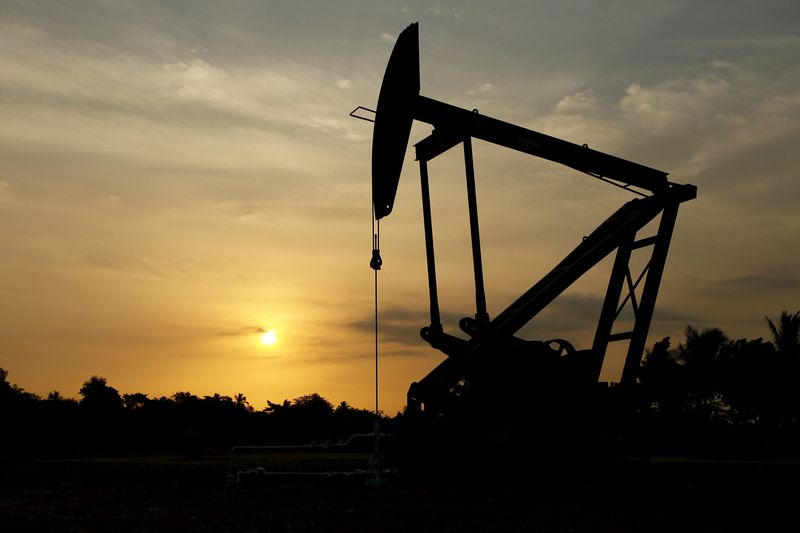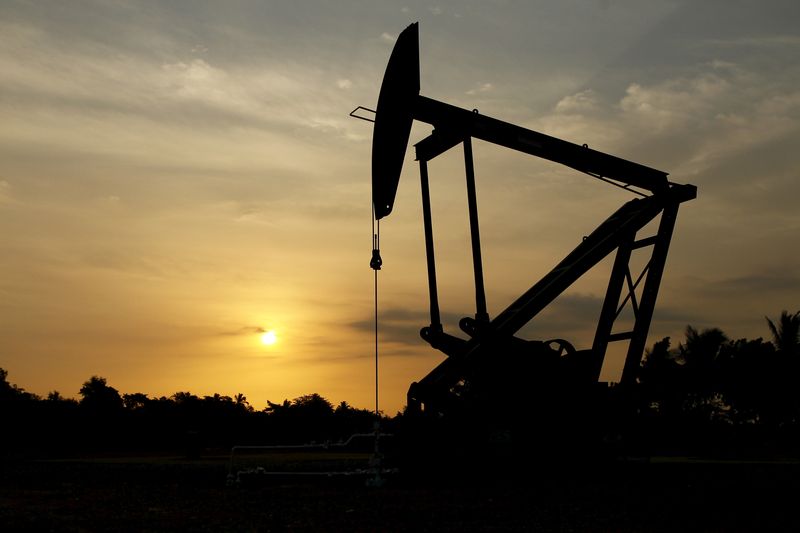Commodities
Oil prices dip as prospect of additional supply offsets Mideast fears

By Arunima Kumar
(Reuters) -Oil prices edged lower on Tuesday as a stronger supply outlook and tepid global demand growth outweighed fears over escalating conflict in the Middle East and its impact on crude exports from the region.
futures for December delivery slipped by 49 cents, or 0.7%, to $71.21 a barrel by 1117 GMT. U.S. West Texas Intermediate (WTI)crude futures lost 55 cents, or 0.8%, to $67.62.
Brent fell as much as 2.5% earlier in the session and WTI crude plunged by 2.7% before paring losses.
A panel of top ministers from the OPEC+ producer group meets on Oct. 2 to review the market, with no policy changes expected. Starting in December, the OPEC+ comprising the Organizations of the Petroleum Exporting Countries (OPEC) plus allies such as Russia is scheduled to raise output by 180,000 barrels per day (bpd) each month.
The possibility of Libyan oil output recovering also weighed on the market. Libya’s eastern-based parliament agreed on Monday to approve the nomination of a new central bank governor, which could help to end a crisis that drastically reduced the country’s oil output.
“Opposing forces are keeping oil sideways trading for now,” said UBS analyst Giovanni Staunovo, pointing to Chinese stimulus, U.S. oil demand growth and slowing supply growth on the positive side and a looming resumption of Libyan output on the negative side.
In China, manufacturing activity shrank sharply in September, a private sector survey showed on Monday.
Analysts say a slew of stimulus measures over the past week are likely to be enough to bring China’s 2024 growth back to about 5% after several months of below-forecast data cast doubts over that target, though the longer-term outlook remains little changed.
Israel began ground incursions in Lebanon on Tuesday, with its military saying troops had begun raids against Hezbollah targets in the border area.
The attacks follow Israel’s killing on Friday of Hezbollah head Hassan Nasrallah and represent an escalation in a conflict that now threatens to suck in the United States and Iran.
“Risk weighting for front-month oil futures is currently contingent upon what Israel might do next and if there is a direct confrontation with Iran,” said independent oil analyst Gaurav Sharma.

In the United States, crude oil and fuel stockpiles were expected to have fallen by about 2.1 million barrels in the week to Sept. 27, a preliminary Reuters poll showed on Monday.
The poll was conducted ahead of a report from the American Petroleum Institute industry group due at 2030 GMT on Tuesday.
Commodities
Oil prices rise; U.S. crude inventories plunge, Russia-Ukraine truce eyed
Commodities
India’s Reliance to stop buying Venezuelan oil over US tariffs, sources say
Commodities
Oil prices climb on Venezuela supply worries

 Forex3 years ago
Forex3 years agoForex Today: the dollar is gaining strength amid gloomy sentiment at the start of the Fed’s week

 Forex3 years ago
Forex3 years agoUnbiased review of Pocket Option broker

 Forex3 years ago
Forex3 years agoDollar to pound sterling exchange rate today: Pound plummeted to its lowest since 1985

 Forex3 years ago
Forex3 years agoHow is the Australian dollar doing today?

 Cryptocurrency3 years ago
Cryptocurrency3 years agoWhat happened in the crypto market – current events today

 World3 years ago
World3 years agoWhy are modern video games an art form?

 Commodities3 years ago
Commodities3 years agoCopper continues to fall in price on expectations of lower demand in China

 Economy3 years ago
Economy3 years agoCrude oil tankers double in price due to EU anti-Russian sanctions

























